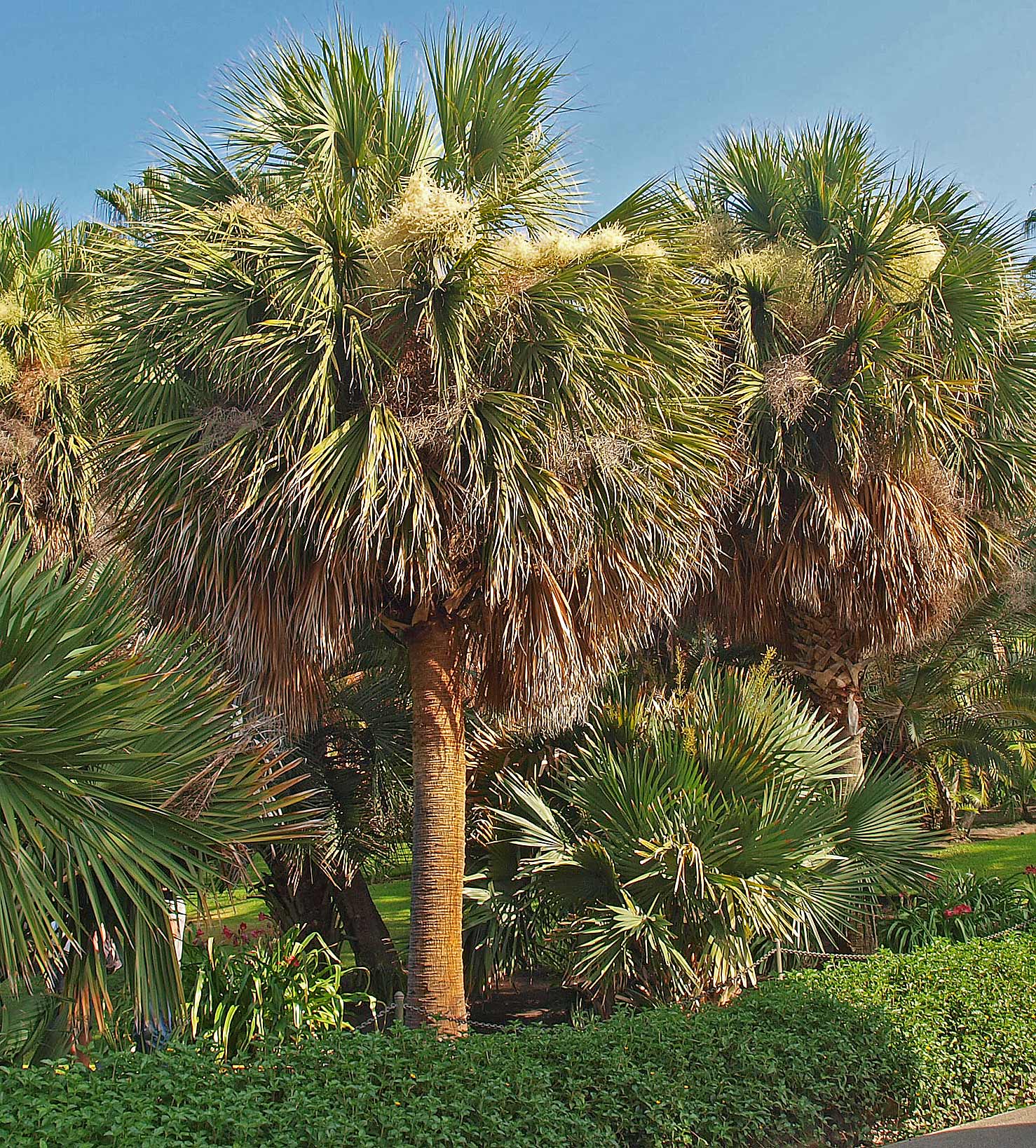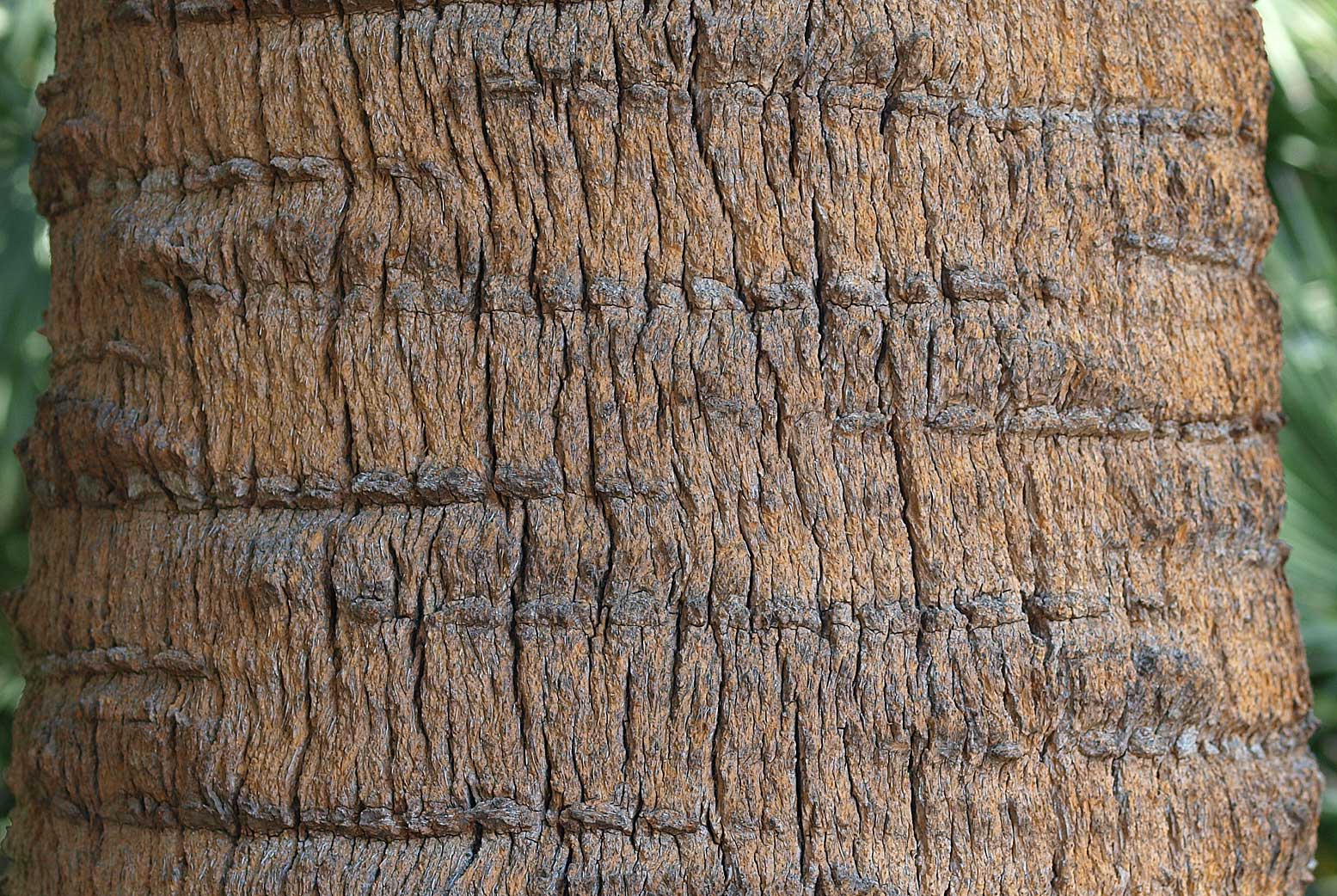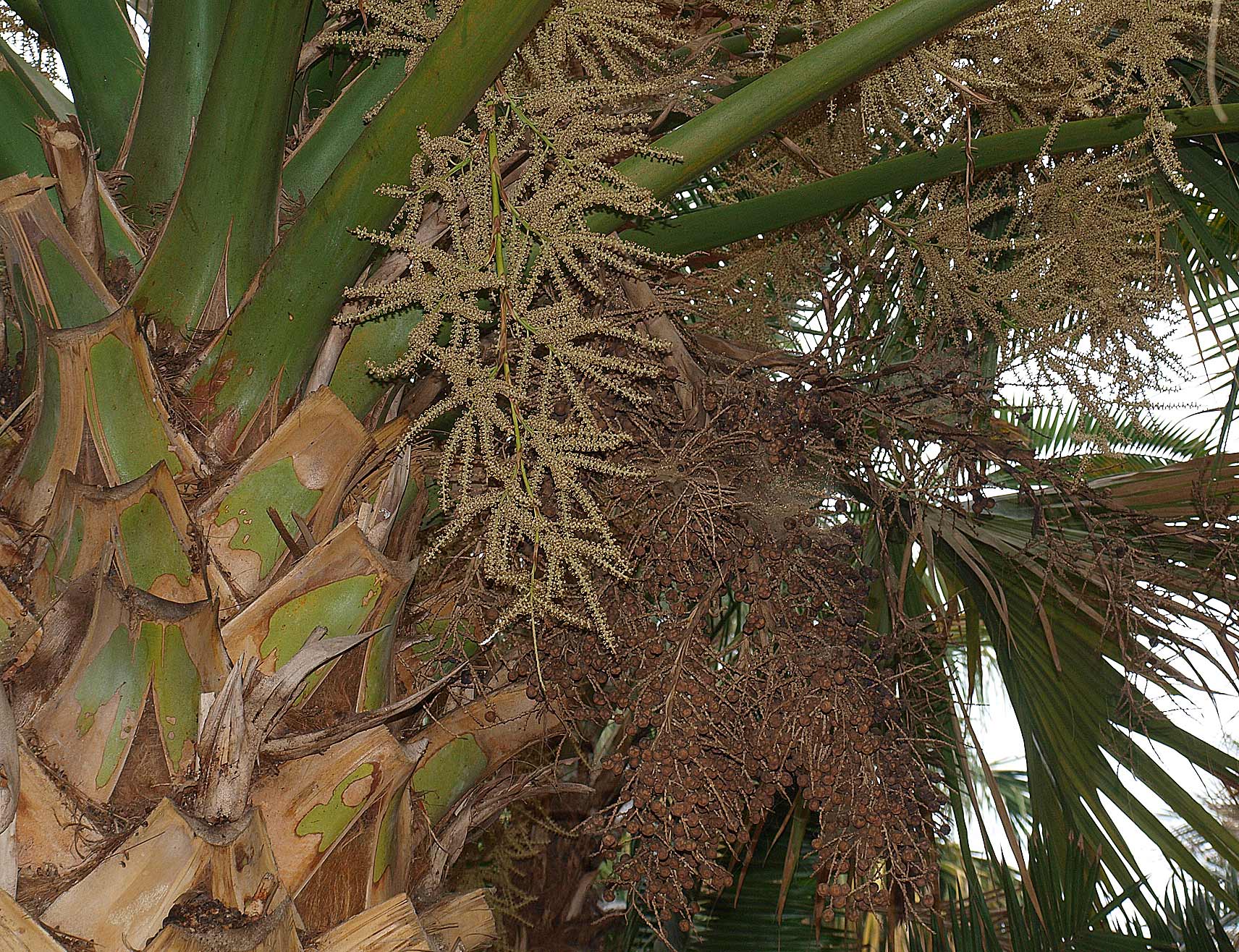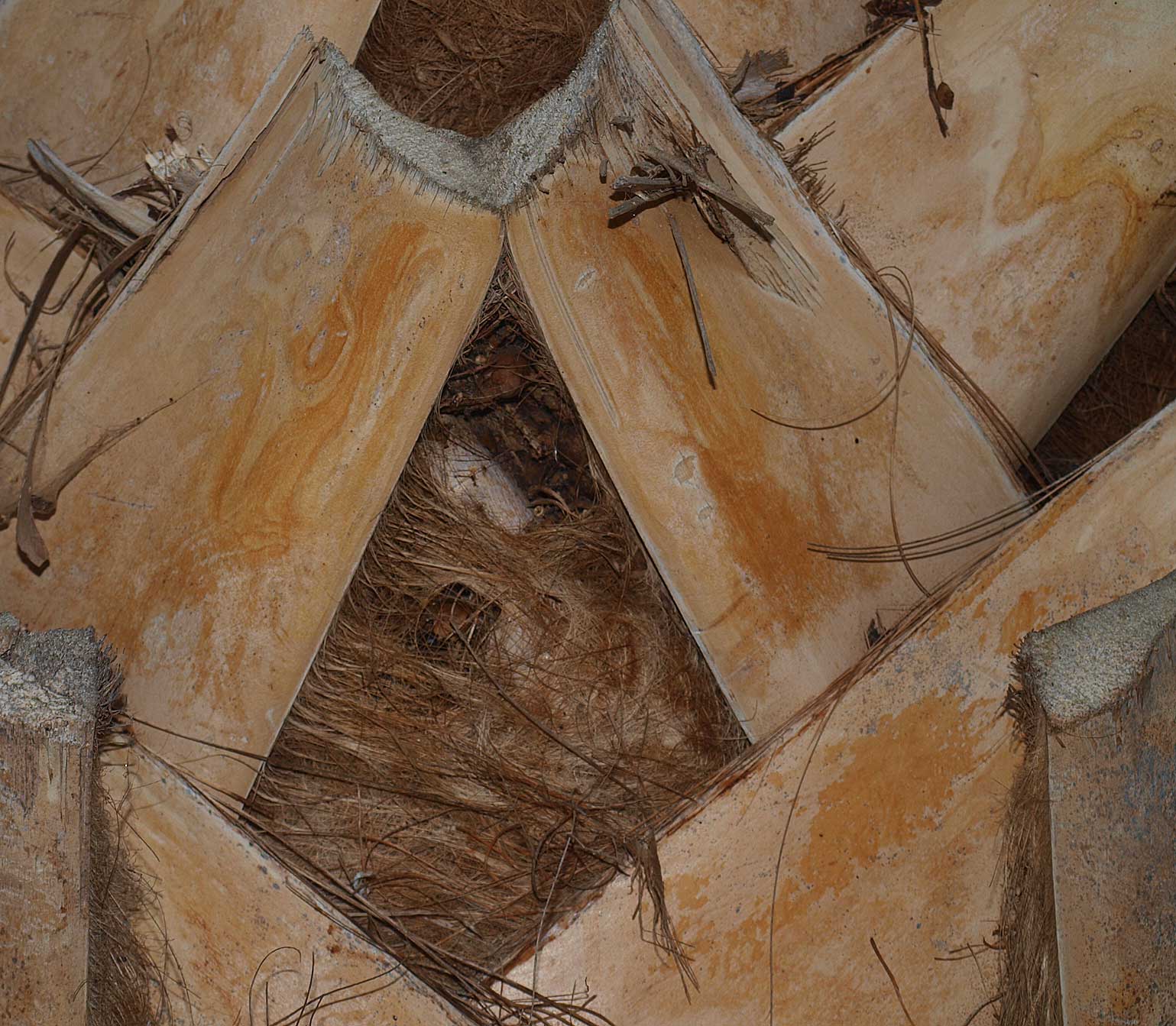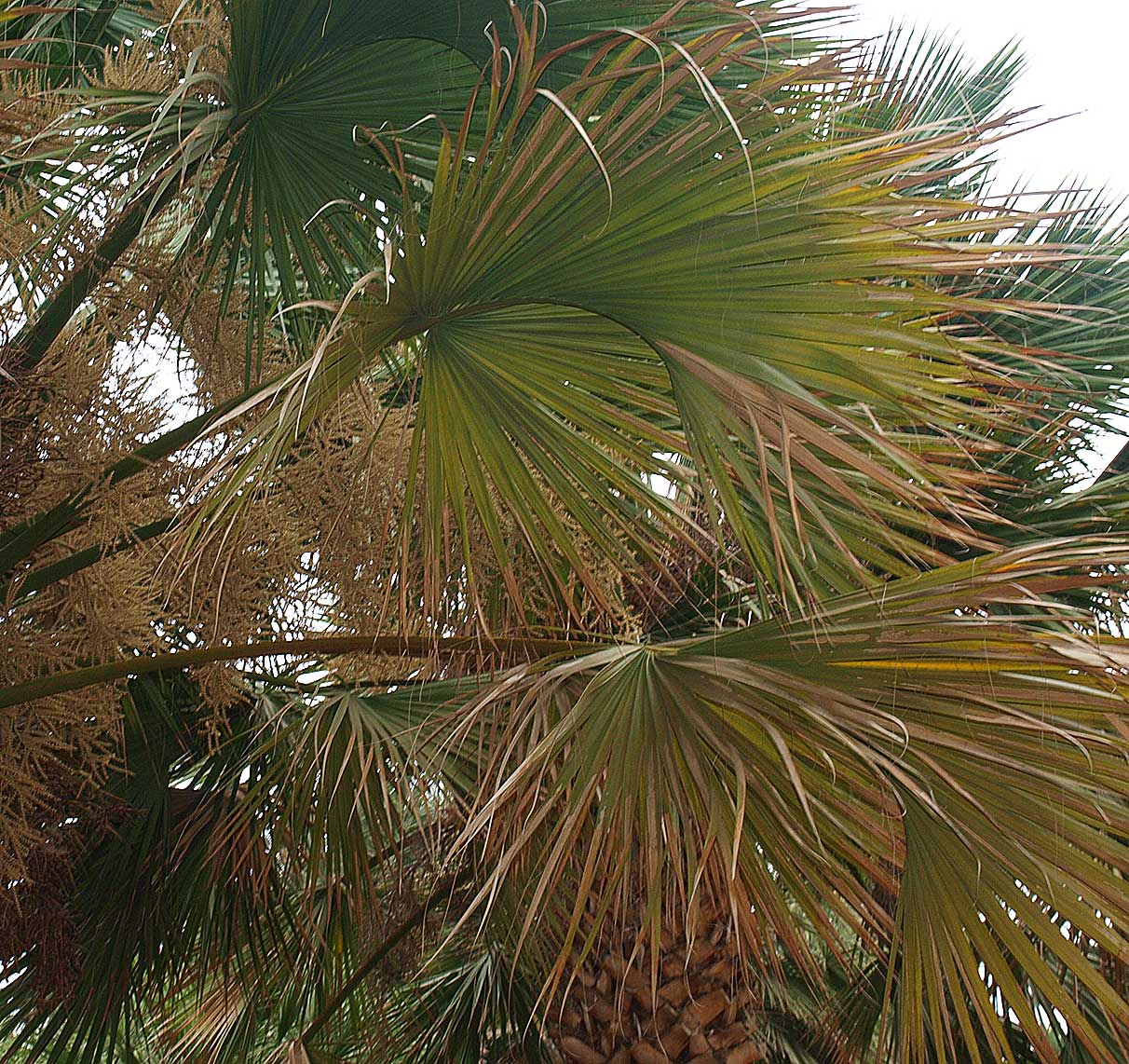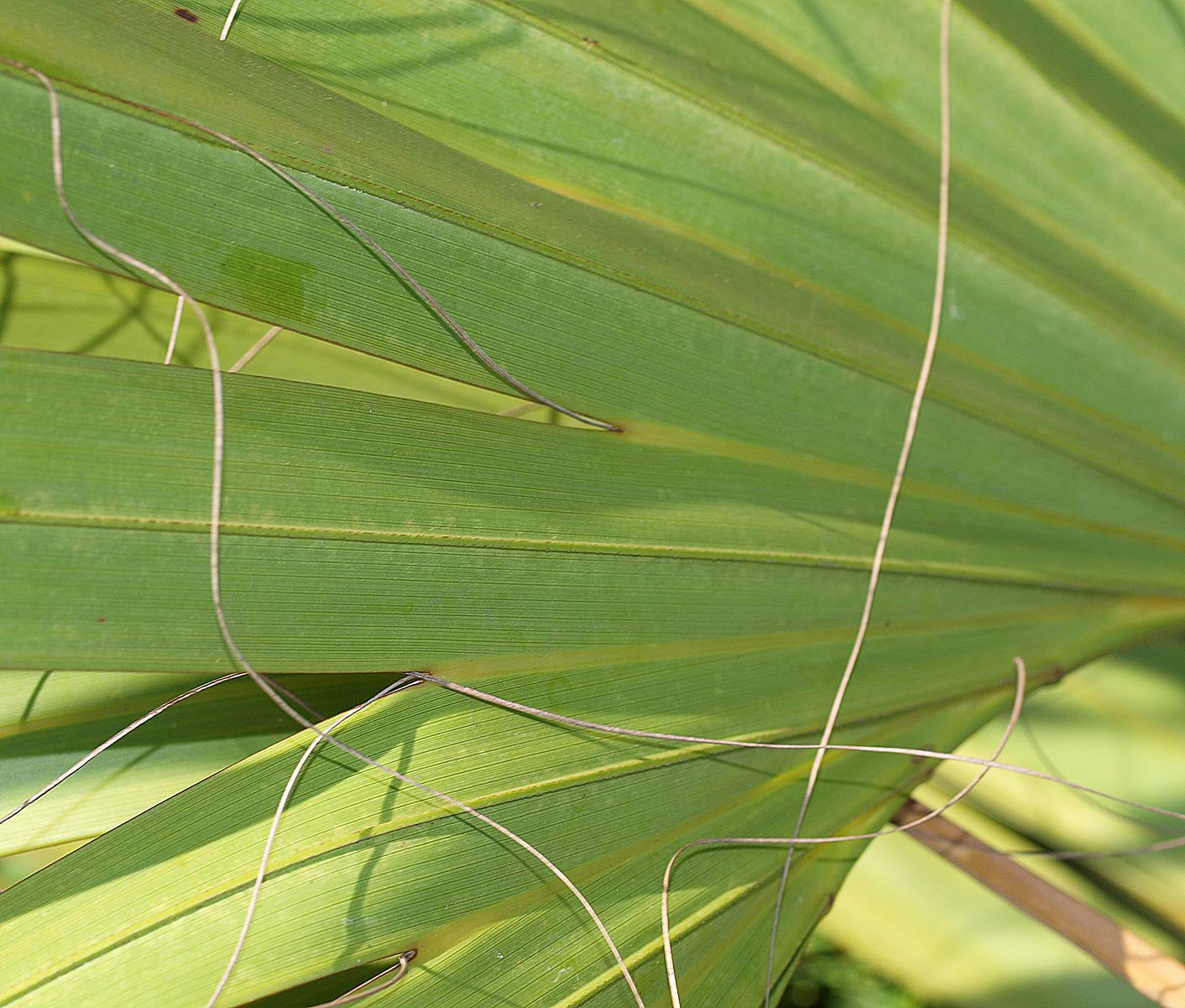Sabal mexicana
|
Sabal mexicana habit. |
|
Sabal mexicana stem with human for size comparison |
|
Sabal mexicana stem |
|
Sabal mexicana stem with inflorescence |
|
Sabal mexicana stem with split leaf base |
|
Sabal mexicana leaves, with arching costa |
|
Sabal mexicana leaf with fibers |
|
Sabal mexicana adaxial hastula |
Common name
Texas palmetto, Rio Grande palmetto
Description
Stems: Solitary, massive, upright stems to 15 m tall and to 35 cm diameter. Leafleaf:
in palms -- the leaf blade (which is usually divided into leaflets or leaf segments), the petiole (or leaf stalk) and the sheath (which forms the attachment of the leaf to the stem)
bases fall away after many years to leave a rough brown stem with close rings. Leaves: Costapalmate, induplicateinduplicate:
Most palm leaflets or leaf segments are obviously folded. If the folds create a V-shape, with the midrib lower than the margins (so that rain might fall "into a valley"), the folding is induplicate.
, with a prominent, arching costacosta:
mid-rib or vein
, dark green, to 2 m wide. Leafleaf:
in palms -- the leaf blade (which is usually divided into leaflets or leaf segments), the petiole (or leaf stalk) and the sheath (which forms the attachment of the leaf to the stem)
segments rigid, with numerous fibers along the segment margins, tips bifidbifid:
deeply cleft into two usually equal parts or two-lobed from the apex; for example, palms with bifid leaves or leaflet tips (e.g., <em>Chamaedorea metallica</em> has bifid leaves)
. Petiole bases split. No spines or teeth. Flowers and fruits: Inflorescences about the same length as the leaves, arching, and branched to three orders. Inflorescences may appear before the stem reaches 1 m in height. Flowers creamy white, bisexual. Ripe fruit black, spherical to oblong, 15-19 mm diameter.
Diagnostic features
Solitary, upright palm with a prominent, arching costacosta:
mid-rib or vein
, dark green leafleaf:
in palms -- the leaf blade (which is usually divided into leaflets or leaf segments), the petiole (or leaf stalk) and the sheath (which forms the attachment of the leaf to the stem)
segments with numerous fibers along the segment margins. Petiole with split bases and no marginal spines or teeth. Fruit 15-19 mm in diameter.
May be confused with
Very similar to Sabal palmetto, but shorter, stouter, has a larger canopy and can produce flowers when the stem is less than 1 m tall
Distribution
Native to Texas, Mexico and Central America
Additional comments
This genus is among the most common in and around the Caribbean region and among the few native to the continental United States.
Scientific name
Sabal mexicana Mart.
Family
Arecaceae/Palmae
Synonyms
Inodes exul O. F. Cook
Inodes mexicana (Martius) Standley
Inodes texana O. F. Cook
Sabal exul (O. F. Cook) L. H. Bailey
Sabal texana (O. F. Cook) Becc.


